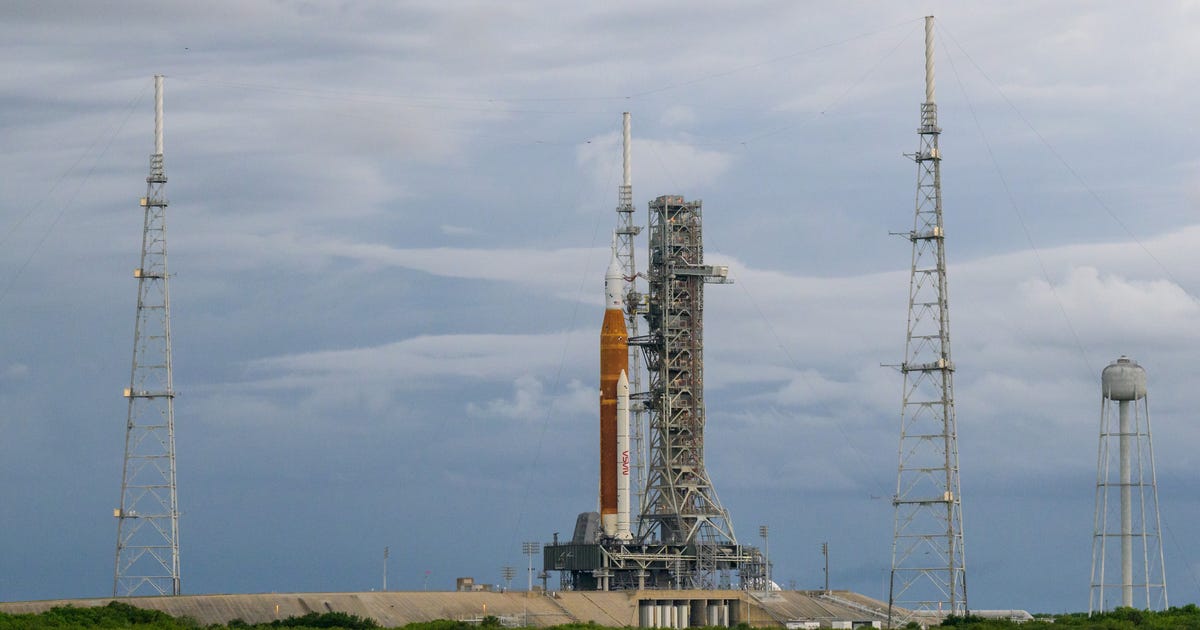NASA Secures Artemis I Moon Rocket Indoors as Hurricane Ian Nears
NASA has temporarily called off the launch of Artemis I and officially rolled its mammoth Space Launch System rocket and Orion capsule back to the Vehicle Assembly Building at Kennedy Space Center. The decision comes as Hurricane Ian threatens to travel north across Cuba and into Florida, bringing extreme winds and rain to the pad’s vicinity.
The space agency decided to stand down its launch teams and focus on preparing for a rollback Saturday morning, deferring a final call to Sunday. On Sunday, NASA announced it would continue monitoring the storm, giving it every last opportunity for the rocket to remain on the pad and to shoot for an Oct. 2 launch date — but on Monday, it was announced that the tangerine-hued rocket will be rolled back into the VAB. Movement started on Monday at 11:21 p.m. ET and after a slow, four mile journey, the space-bound vessel was secured inside the building on Tuesday.
That timing, NASA explained, was based on predicted weather criteria in the area and the decision to allow “time for employees to address the needs of their families and protect the integrated rocket and spacecraft system.”
Tropical Storm Ian intensified Sunday night and was reclassed as a hurricane, the fifth of the 2022 season. The risk to the spacecraft was too great to leave it exposed. NASA had seen a storm barrel through the space center prior to the first launch attempt, with stunning photographs captured of the launchpad’s lightning towers diverting dangerous bolts away from the rocket.
The rollback comes after two aborted launch attempts. In late August, during the first attempt, NASA discovered a problem with engine 3. The second attempt saw a hydrogen leak force an abort. After further tests on Sept. 21, NASA appeared ready to go, but the Atlantic hurricane season has forced another delay. NASA will now evaluate the next best opportunity to launch Artemis I to the moon while the rocket waits in the Vehicle Assembly Building.
Inspection will begin after the storm has passed, the agency says, as well as interventions such as “replacing the core stage flight termination system batteries and retesting the system to ensure it can terminate the flight if necessary for public safety in the event of an emergency during launch.”
For all the latest world News Click Here

